A little morning blooming, too.
My white and pink Four O’Clock, Mirabilis jalapa, are joyously flowering this spring. These are passalong plants from gardening buddy, TexasDeb, who blogs at the most excellent austin agrodolce.
For years I’ve coveted Four O’Clocks, also known as Marvel of Peru, for my gardens. I don’t know why it’s taken me so long to snag some, but they’re merrily floriferous in my garden now.
They are called “Four O’Clocks” because single blooms open in late afternoon, bloom all night and into the morning hours, then close, ready to set seed.
 I’ve always thought Four O’Clocks would be great companion plants to the native Texas Rock Rose, Pavonia lasiopetala.
I’ve always thought Four O’Clocks would be great companion plants to the native Texas Rock Rose, Pavonia lasiopetala.
Pavonia flowers open early in the morning and close with the heat of the afternoon, especially during summer. Four O’Clocks throw open their windows for the pollinators at roughly the same time that the Rock Rose blooms shutter their petals for their night-time rest. Nice time-sharing for pollination, am I right?
Somehow, I managed to NOT plant any of TexasDeb’s Four O’Clock gifts alongside the multitudes of Rock Rose plants in my gardens. Despite that planting blunder, I’m still enjoying their fragrance and beauty. At night,
….and at morning’s’ first light.
Late afternoons in spring, summer, and autumn, the tubular flowers are full-to-bursting, waiting for the sun to set so they can open for business, providing nectar and pollen for (primarily) moths.
Originally from the Peruvian Andes, the Four O’Clock plant is thought to have been transported back to Europe and cultivated there. There are native forms of this genus in Central and North America, though it’s likely that most M. jalapa found in home gardens are common, long-established cultivars.
They do seed out,
…and this spring, I’ve already plucked seedlings gifted by the mother plants. I wish I had room for more of these lovelies. Alas, my gardens are stuffed.
The tuberous roots may grow quite large, which is probably why Four O’Clocks are hardy, water-wise plants which snicker at our hot summers, blooming all the while. They die back with winter chill, to their bulbous roots, returning quickly with the warmer, longer days of spring.
Four O’Clocks are a mainstay of the traditional southern garden and going forward, mine as well.
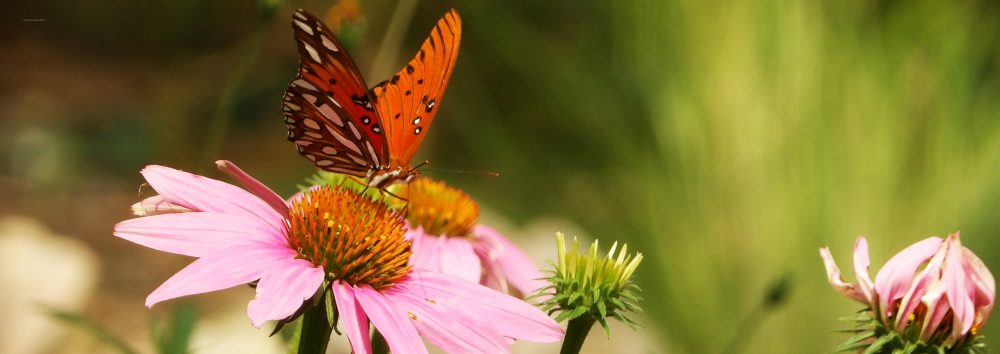





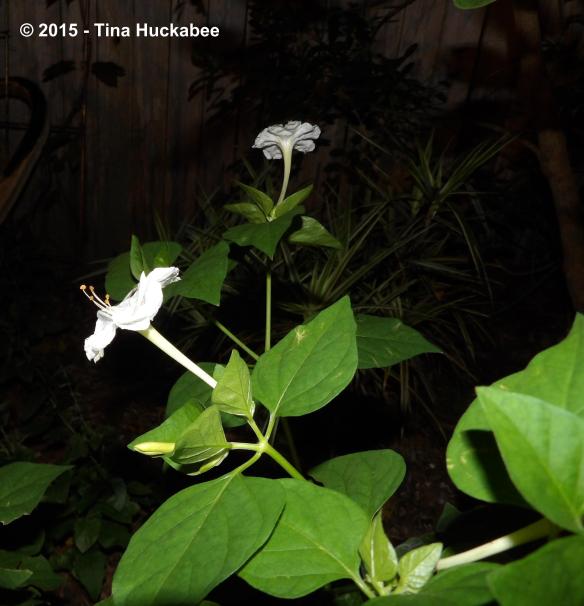

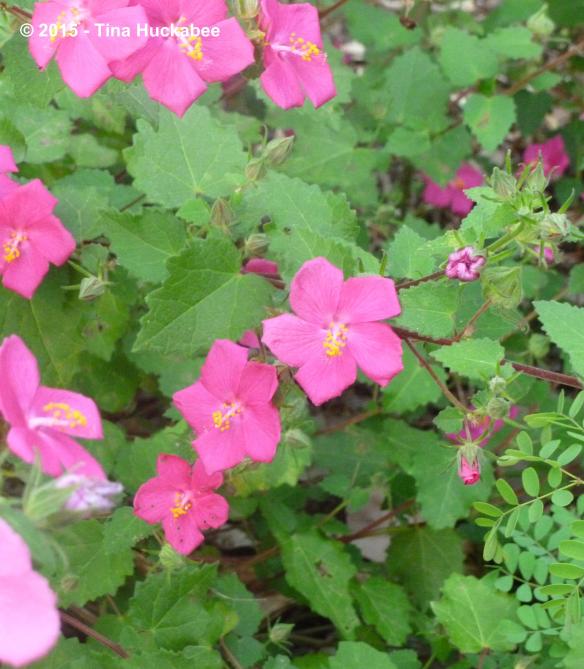
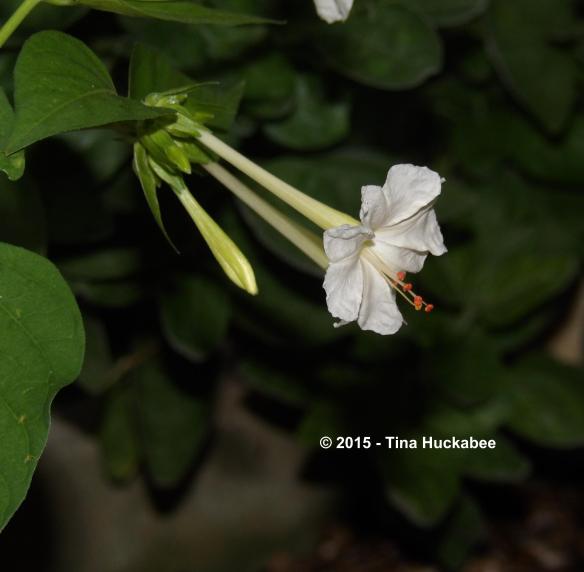
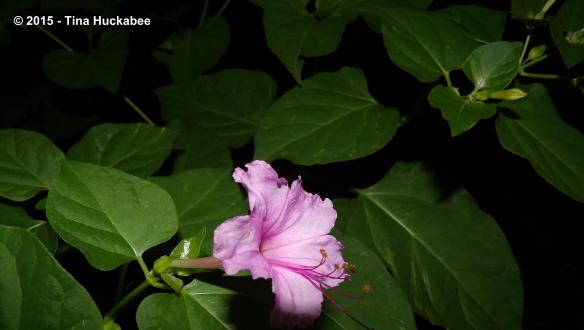



Great shots! Four-o-clocks feel old-fashioned to me, which I like, and the deer leave them be, which I admire greatly in a flowering plant that will take full sun or significant shade and still bloom all summer long. I’m just waiting to see which of the passalong pavonia plants you swapped me gear up significantly after a year to get established, and then I’m definitely going to try them in tandem with four-o-clocks. That could be a genius pairing!
LikeLike
Thanks! And thanks–for the Four O’Clocks! They’re so tough, I’m just amazed. You gave them to me about a year ago, I planted, then realized one was in a bad spot. You assured me that they transplanted well, so I yanked it up and popped it into another spot. It hardly missed a beat and that was in the summer. Late July or August, as I recall. That’s my kinda plant!
All of mine are in shade/part shade–which I have an abundance of, so I’m pleased to have something for those spots.
I have more Pavonia…..
LikeLike
I love their evening perfume fragrance!
LikeLike
They do have a lovely fragrance!
LikeLike
It’s so nice to see the pure, pale coloured ones. The most common seed here is for ‘Broken Colours’.
LikeLike
I had to look up the ‘Broken Colours’–it’s quite pretty, though I guess it might get boring if that’s all you have. I’ve mostly seen solid color Four ‘O Clocks here in Central Texas–pinks/purples and white/cream. I’m very happy with the ones I have.
LikeLike
We always had four o’clocks when I was a child, the vivid colors. Your whites and pastels are lovely.
LikeLike
I think they’re pretty too. That pink is a rather deep pink and becomes paler as it nears its blooming end. Nice!
LikeLike
I am looking forward to growing some from seed this year…I have them in a couple of spots as I watch them germinate. I have long heard about these flowers and now you have made me want to see even more in my garden!
LikeLike
Part of the reason I like them is that they’re so old-fashioned. Thomas Jefferson grew them (and Four O’Clocks still grow at Monticello). There’s such a charm about these kinds of passalongs.
LikeLike
This is a new plant to me Tina, what a great reason to get up in the middle of the night, moths must be loving you this year!
LikeLike
Ha! I don’t get up to see these, but I have been known to stroll in the garden just before climbing into bed. I hope the moths are happy. They’ll be even happier when the Datura wrightii (another night bloomer) begins its flowering.
LikeLiked by 1 person
Beautiful plants. I haven’t seen four o’clocks in years but I’ve always admired them. Lucky you!
LikeLike
They are awfully pretty, aren’t they? Luck is when you have good gardening buddies!
LikeLike
I just love 4 O’clocks. They are pretty and as you say really tough thanks to that tuberous root system. I am definitely going to try growing some alongside the pavonia. That is a clever idea. My neighbour has her white ones paired with turk’s cap and it is a spectacular combo.
LikeLike
Oooo, Turk’s Cap and Four O’Clocks–nice combo! I’m so glad to have them in my garden.
LikeLike
Great night captures! I love the idea of a moon garden. There’s are nifty one at the Edison and Ford Winter Estates in Fort Myers, Fla. It was designed to look beautiful day and night, with a reflecting pond and white viny flowers and hedges. Your Four O’Clocks are gorgeous!
LikeLike
I love that idea–moon garden. Soooo romantic. The garden in Fort Myers sounds gorgeous–going to Google!!
LikeLike